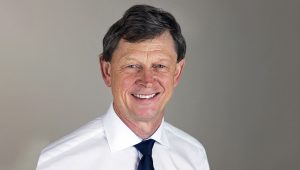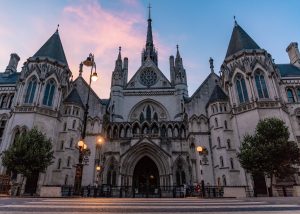This month Lawyer Monthly spoke to Peter J Kirkpatrick, an enthusiast aircraft pilot, who is deeply involved in the restoration of a Mark I Hawker Hurricane V7497 aeroplane, in the hopes to not only one day fly it, but to also recreate a part of the Battle of Britain’s history, for the educational and cultural benefit of future generations.
Although the restoration project has reached its half way mark, funding and support is crucial, and Peter is now calling for all those interested in supporting the project, to reach out and help be a part of this tremendously inspiring project, by way of funding, legal services and awareness, in order to recreate history for the future.
V7497 was flown by Flying Officer Rogers when the aircraft was felled by three Me109s. He parachuted to survive and serve for Bomb Command. The aircraft came down heavily and was buried, the reason why many original parts appear in the restoration (~30%). This is because engineers would skeletonise the wreckage for parts if they were accessible, and put the parts into another Hurricane. V7497 is probably the most original BoB aircraft in that sense, and represents only the 2nd Mark I Hurricane to be restored to flying condition worldwide.
The engine is the famous Rolls Royce Merlin, Mark III. This powered all BoB aircraft, Spitfires and Hurricane, and deliver 1050hp. Although slightly slower than the Mark I Spitfire, the Hurricane could out turn any of the contemporary fighters, provided a better gun platform, and was designed in such a way for easy on site repairs. As such more remained serviceable for battle, and accounted for over 60% of the enemy aircraft. It is generally agreed that without the Spitfire the battle would still have been won, whereas without the Hurricane we would have lost. If the BoB had been lost, there would have been no Western Landmass available for any future counter invasion, and more importantly, Germany would have been unopposed in their Nuclear Arms development, and were two years ahead of other Nations. The US would have been up against the rest of the World, and against a Nuclear force with an unspeakable outcome.
The Pilot (F/O Rogers) survived being shot down on 28th September, 1940 by Me109s whilst at the helm of V7497. He served for 301 squadron at Kenley, and was downed over Sutton in Kent where the aircraft was found and hence the renovation project. Several pilots flew V7497 before it perished, including Fredrick Howard who was later killed and is buried in Cherry Hinton Church.
V7479 is currently at Hawker Restoration Limited (HR) based in Milden, Suffolk (see www.hawkerrestorations.co.uk). The Merlin Mark III engine, the type used by both hurricanes and Spitfires during the BoB, is being stripped and renovated by Eye Tech Engineering Ltd, located in Eye, Suffolk, one of few companies worldwide who are able to renovate RR Merlins. Eye have made the replica Browning machine guns which were universally used at the time, eight in all.
The aircraft is approximately 70% complete, and the completion date is approximately 6-12 months, at which point it will start the ground run tests before test flights. She is hoped to be displayed by this time next year.
Peter J Kirkpatrick is a Consultant Neurosurgeon who was appointed at Addenbrookes Hospital, Cambridge, in 1994. Peter has been in the post for 32 years, specialising in Neurovascular surgery. This area of Neurosurgery is recognised as being at the most technically demanding end of the speciality attracting both the greatest benefits to patient with Neurosurgical pathology, but also associated with the greatest risks. 32 years is a long time to be in such a demanding specialty and Peter says fatigue is a recognised problem in this arena.
As a consequence, Peter had always expected to change direction in his mid to late fifties, though he never knew precisely what he would do thereon. As it happens, Peter’s enthusiasm for flying began to grow over the last 10 years or so, and says this project has given him an opportunity to engage in both his recreational passion, but also his historical interest in the Great World Wars.
Peter started flying as a medical student – handgliders – the poor man’s flying sport. He then moved to Scotland for three years during his junior Doctors career and flew in the Scottish Hangliding league over that period. This hobby then progressed to Microlights, until he later became a Consultant. Peter says it was only because he bent the microlight in heavy grass and at the same time operated upon a local farmer whose son operated an aerodrome at Top Farm near Sandy, that the opportunity to fly fixed wing presented itself.
Upon transferring to fixed wing aircraft, he soon bought his first aeroplane, which was a 1946 Luscombe Silvaire, an aeroplane which looks very similar to the Spiriti of St. Louis, the first craft to cross the Atlantic! After flying the Luscombe for a few years, Peter then moved up to a Pitts Special, the aircraft he now owns; an aerobatic biplane which demands a lot of flying attention. Having flown this for five years, Peter says he can finally say he now knows how to fly an aeroplane mindful of all three dimensions. He has recently returned from North Carolina having completed a WAR Bird Conversion course flying the American Harvard T6 Military trainer which will continue at Duxford in readiness for the Hurricane completion date.
The opportunity of becoming involved in a Battle of Britain Warbird project came about fortuitously following a telephone conversation between Peter and Tony Ditheridge of Hawker Restoration Ltd. Tony, traditionally a tool maker, setup the Company on the back of his historical Car restoration business, using the same skills applied to aeroplane. He tooled himself up, and has had a hand in restoring the majority of the 11 or so Hurricane flying today. He had kept back a special project for himself, a Mark I Battle of Britain serving Hurricane (V7497), out of Kenley Aerodrome (Squadron 501), which was shot down over Kent on 29th September 1940, having only been in service since the 24th September; a fairly standard duration for fighters at the height of the battle.
Tony was hoping to fly the aircraft himself but, following a flying accident, time was no longer on his side, and so he decided to canvass a partner – Peter J Kirkpatrick.
Peter has now been observing the evolution of the build over the past 18 months, an experience he describes as a true privilege. The engineering skills required to put a hurricane together are immense – they could not have made the engineering more complex if they had tried. Indeed, the engineering techniques are so complex that few restorers worldwide can renovate Hurricanes. Over a million individual parts are involved! Peter says that bearing in mind the aircraft, in concept, was on the drawing board in the early 1930’s, only 12 years after the end of the 1st World War, the pace of industrial evolution with respect to aviation is second to none.
Peter’s current ambition is to therefore honour those who put the Hurricane design project together, those who built the aircraft, and of course those who flew in them, many of whom lost their lives. Peter and the team have a tribute website to the 501 Squadron, a representative of all BoB pilots, which you can view at hurricane501.co.uk.
Ambitiously, Peter would like to see this project complete by next year, in order to fly V7497, and hold the control stick directly after Flying Officer Roger’s final flight!
Currently, Peter is responsible for half the project, with Hawker restoration owing the other half. As you’ll expect these projects are not cheap, and the rebuild cost of circa 2 million, in Peter’s view, belies the30 thousand hours required to construct her even before one starts to consider the cost of the hardware. He says many items have to be made in a bespoke fashion, one offs, and this is expensive. For example eight replica Browning machine guns have been manufactured to fit into the wings, providing authenticity for what was a fighter aeroplane. Unfortunately, by law, the restoration project is not allowed to fit genuine guns.
V7497, when complete, will undergo test flying before going to its rightful home at the Imperial War Museum in Duxford, originally a war time Hurricane base. There, the aircraft will be viewed by hundreds of thousands of members of the public, flown in displays, and at special events. For example, as a medical officer for the Newmarket race course, Peter says they are aiming to display V7497 at their key events, including landing and taxing up the race course at the conclusion of the race day.
As Peter is currently responsible for a 50% share in partnership with HR, he has formed a company called Hurricane Restoration Ltd. However, he does wish to involve other parties, possibly no more than four (ideally three part ownership with himself & HR) with an equal share of the total rebuild cost (circa £2 million).
The other flying Mark I Hurricane has changed hands for £2.4 million. However, this particular aircraft is somewhat aged and needs a considerable amount spending on her to keep her airworthy. The last Mark I Spitfire sold for 3.1 million, and as Peter says, is a far easier aircraft to construct.
This project will result in a zero timed aircraft with guarantees, and very little will be expected to require attention for many years to come. The Merlin engine will be slightly modified with different engine block and a pre-start oiler to increase the life from 300 to 600 hours before an overhaul is required – i.e. probably 15-20 years’ worth of action! This is the current state of play; the wings being the next build project whilst the engine is under renovation.
Another aim for the project now is to help offset the running costs of circa 70Kpa, most of which is insurance. An insurance sponsor (circa 40K pa) and/or an aviation fuel sponsor (circa 20K pa) would represent a massive gain for securing the serviceability of V7497. We will have free hangarage at Duxford due to an internal arrangement. “Indeed it will place amongst the elite collection – the Battle of Britain collection alongside a rare Mark I Spitfire and (non-flying) Me109 what a tribute!” says Peter.
In terms of the business side of the project, the first comments are in relation to the asset – the aircraft itself. The Mark 2’s (significantly less historical value) were going for around 850K in 1997, and now sell just under 2.5 million, a capital gain of 15% per annum, from which running costs need to be deducted. However, air display revenue usually covers the yearly costs including hangar, insurance and servicing costs.
As Hawker does eventually want to sell their half of V7947 to a suitable individual/organisation, funding also remains a concern in the longer term. For those who are mindful of the investment side of things, the rate of capital appreciation from the late 1990s has been around 15% per annum. In addition, like classic cars, these historical aircraft now attract EIS relief, and after three years they are capital gain free. This is the government’s contribution to supporting British projects of importance from the heritage standpoint. However, Peter and the team do emphasise that they wish to operate the aeroplane for several years for the reasons stated above, rather than looking towards a quick investment return.
According to Peter, a second, and potentially very exciting line of revenue, is in relation to merchandise. The team is also building up a number of merchandise items for selling on the website, and through Duxford, for the same purpose. Many of these items will have significant educational value. Duxford provides an excellent opportunity for the public to remember how important this aeroplane was, the plane which literally saved the world. Many school trips come to Duxford, and Peter’s project hopes to extend such educational value into the schools themselves. “This aeroplane should never be forgotten,” he tells Lawyer Monthly.
Peter believes that if the aeroplane is branded via the educational media, identifying the Hurricane as the dominant machine which saved us in the critical six month period of the BoB, then the aeroplane could become more of a house hold identity from which merchandise can be generated under the umbrella of the restoration program. The team has prototypes in place for clothing, leather garments and ornaments which capture the period.
The type of investor required is one looking at the longer capital gain, and the revenue side. This is not a short term investment, and for that reason any individuals will need to embrace the history of the project, engage in the merchandise side of the project, and enjoy the production and display aspects of such an important piece of British engineering. Although this project is eligible for EIS relief, we view the project in the longer term as one which is set to rebuild the past, for the future generations to enjoy.
For those who have experienced a spark of joy at reading about this project, and wish to be involved and share in the cultural and educational reward this restoration will bring to life, you can answer the call by contact Peter and his team via the below information.
For any medicolegal enquiries please contact the secretariat at Nuffield Hospital Cambridge on 01223 370914.



















